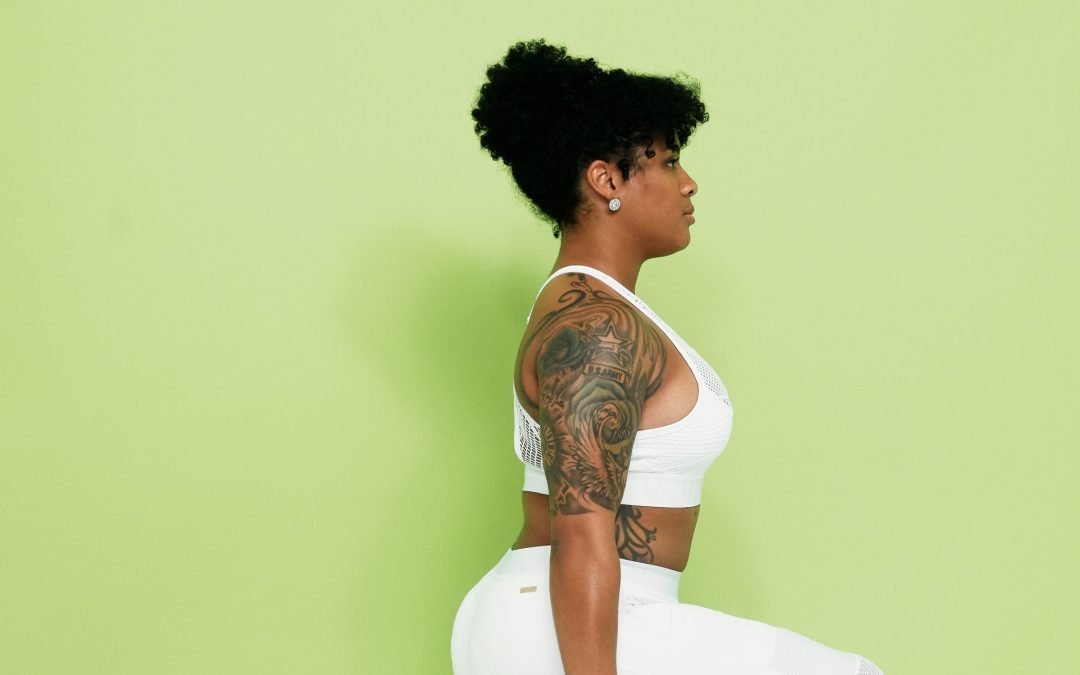If you’re short on equipment, that doesn’t mean you have to shelve your workout: This one-dumbbell workout shows you can work your entire body—you just need to employ some strategic programming.
For instance, one-dumbbell workouts lend themselves to exercises where just one side of your body is loaded with weight. These types of moves, known as unilateral exercises, are especially great at helping you pinpoint and ultimately correct any strength imbalances you have from side to side.
Now, most of us have some degree of imbalance from side to side, meaning one arm or leg is stronger than its counterpart. While minor discrepancies may be NBD, significant gaps can lead to injury since the stronger side can overstress itself by taking on too much work for the weak side. With unilateral moves, you can become aware of imbalances and correct them if needed, thus reducing your risk of injury and boosting your overall strength.
Additionally, unilateral exercises are awesome for challenging your core. “The core has to stabilize when one side of your body is loaded,” ACE-certified personal trainer Sivan Fagan, CPT, owner of Strong With Sivan, tells SELF. Core stabilization helps keep your body upright and ensures it doesn’t tip over or fall to the side.
With that in mind, Fagan created the below one-dumbbell workout for SELF that’s loaded with unilateral exercises—as well as one bilateral move, since there are also benefits to working both sides of your body at the same time. Together, these five moves will work your entire body and seriously fire up your core.
This routine is intended to be performed with a medium weight dumbbell (think 10 to 20 pounds), and as a result, the rep count varies between the moves. That’s because when you’re working with just one weight, the appropriate number of reps will really depend on which exercise you’re doing and the muscle groups it engages.
For example, in this workout, the weighted glute bridge has the highest number of reps since it’s an exercise that hones in on your glutes, which are a super-strong muscle group that can handle a lot of load, says Fagan. It’s also, like we mentioned, the only bilateral move, which means both sides of your body are helping to power the move, thus increasing the load you can take on. The single-arm overhead press, on the other hand, has a much lower rep count since it’s primarily a shoulder move, and your shoulders are a much smaller muscle group.
Of course, the rep ranges provided below are just guidelines, says Fagan. If you’re doing a move and feel like it’s too much for your muscles or you’re feeling it in other areas of your body, back off. “Always make sure that your form is on point,” says Fagan. “Don’t sacrifice form for repetition.”
You can do this workout two to three times a week, so long as you pencil in a day of rest in between workouts so your muscles have time to recover. Also important: Take a few minutes to warm up before getting started so your body is properly primed for the work ahead. Moves like striders, 90/90 stretch, dynamic adductor stretch, frog stretch, open and closed book, and pull-aparts can do the job, says Fagan.
The Workout
What you need: A medium-weight dumbbell, between 10 to 20 pounds. If you have a wider range of dumbbells available, you may want to have them on hand in case you need to scale certain moves up or down. You’ll also need a workout bench or other study, raised surface for the bird-dog row.
Exercises
Superset
- Reverse lunge
- Single-arm overhead press
Triset
- Bird dog row on bench
- Weighted glute bridge
- Plank pull-through
Directions
- For the Superset, complete each exercise for the prescribed number of reps, going from one move to the next without resting. Rest 1 minute after both are done. Complete 3 rounds total.
- For the Triset, complete the prescribed number of reps for each exercise without resting between moves. Rest 1 minute after all three are done. Complete 3 rounds total.
Demoing the moves below are Sarah Taylor (GIF 1), a certified personal trainer and group fitness instructor in Toronto; Nathalie Huerta (GIF 2), coach at the Queer Gym in Oakland; Jowan Ortega (GIF 3), a personal trainer, sports performance coach, and partner at Form Fitness in Brooklyn; and Shauna Harrison (GIF 4-5), a Bay Area–based trainer, yogi, public health academic, advocate, and columnist for SELF.

